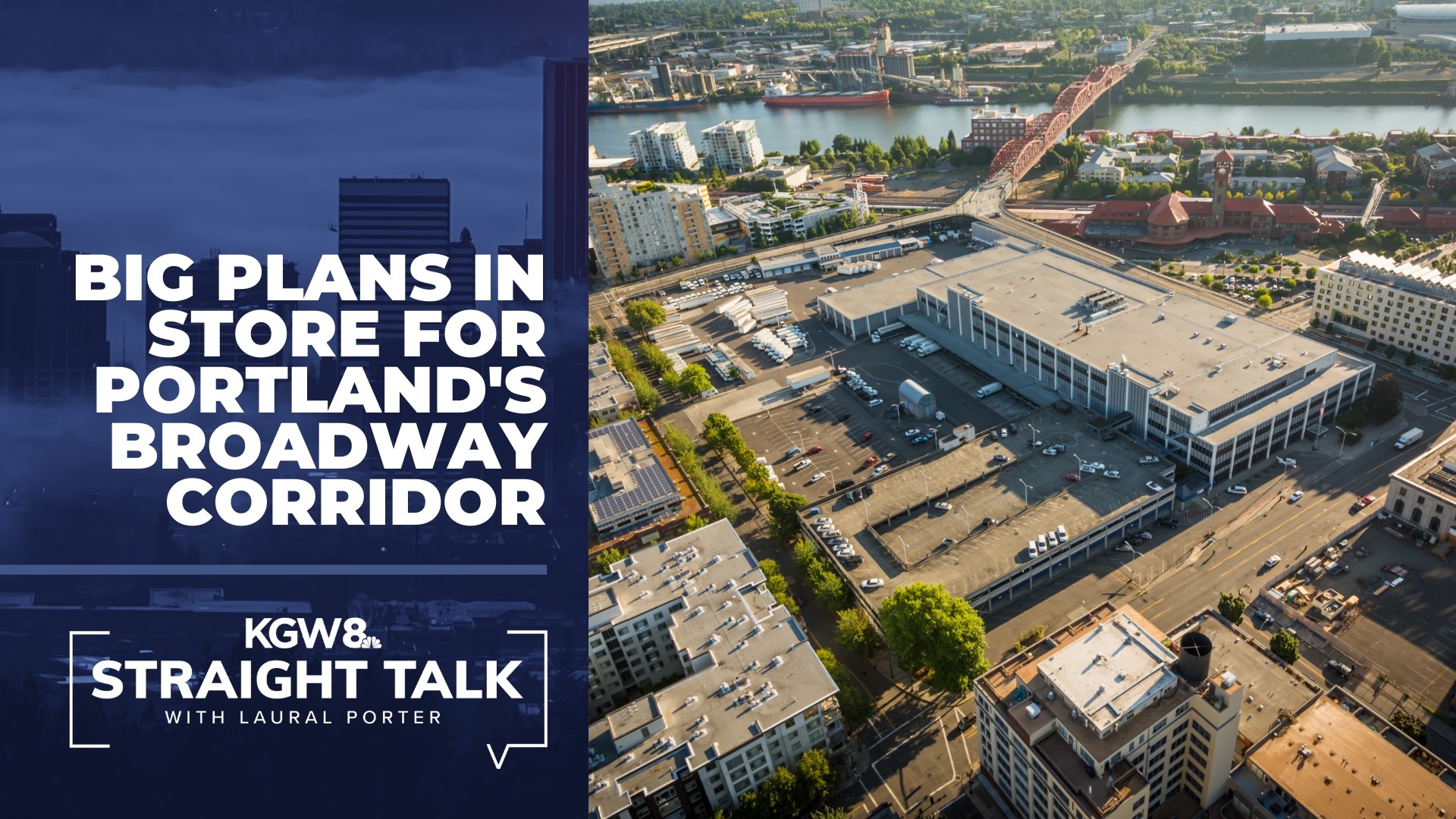PORTLAND, Ore. — Drivers crossing the Broadway Bridge have surely noticed it in the past few months: Nearly all of the former central post office area next to the bridge ramps has been demolished, wiping the 14-acre site clean and setting the stage for a massive redevelopment project right between downtown Portland's Pearl District and Old Town neighborhoods.
The post office site is the centerpiece of the 34-acre Broadway Corridor, which is primarily owned by the Portland Housing Bureau and the economic and urban development organization Prosper Portland. The long-imagined redevelopment aims to transform the site to provide high-density employment, mixed-income housing, new park space and signature city attractions and amenities.
Prosper Portland Executive Director Kimberly Branam, Portland Housing Bureau Interim Director Molly Rogers and Twauna Hennessee, leader of outreach for the Carpenters Union, were all guests on this week's episode of Straight Talk to discuss the vision the future of the Broadway Corridor and what the project will mean for Portland.

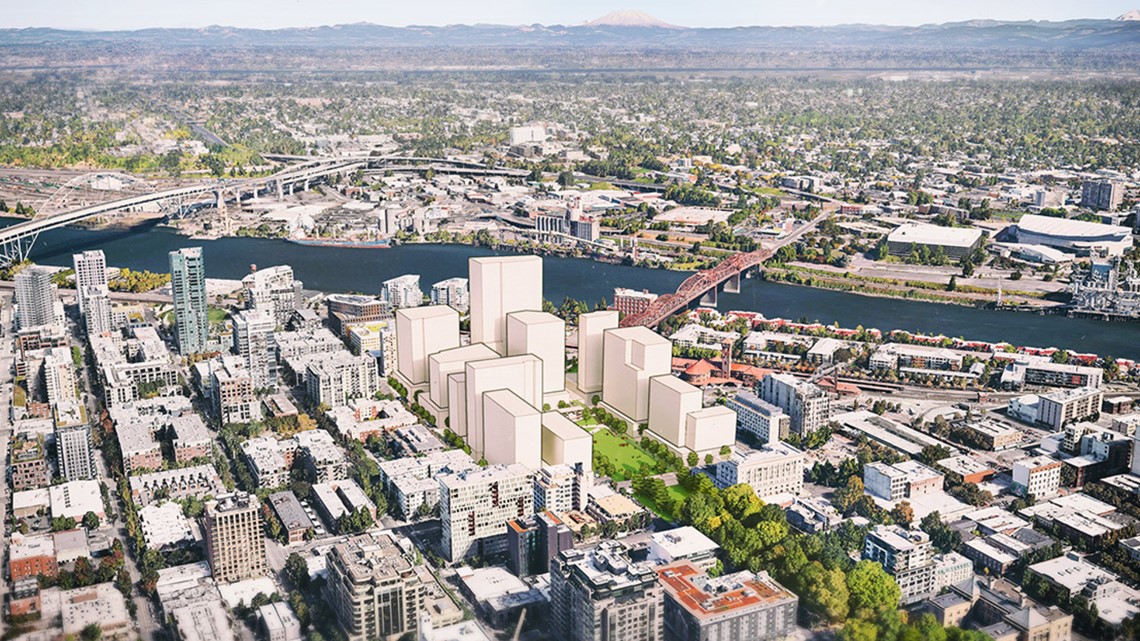
"It gives us an opportunity to build thousands of units of housing, to create opportunities for thousands of new employment opportunities, and to really be a welcoming and inclusive place at the heart of our city," Branam said.
The impact won't come solely from the finished product, either. The scale of the project gives it the potential to be a huge driver of construction jobs and other economic activity for years to come.
"I think of the opportunity for local contractors to work on a major project," Hennessee said. "I look at the opportunity for the houseless to have safe and stable housing. And I think the biggest thing is just for everyday people, the boots on the ground, to have an opportunity for good jobs and good wages and benefits."

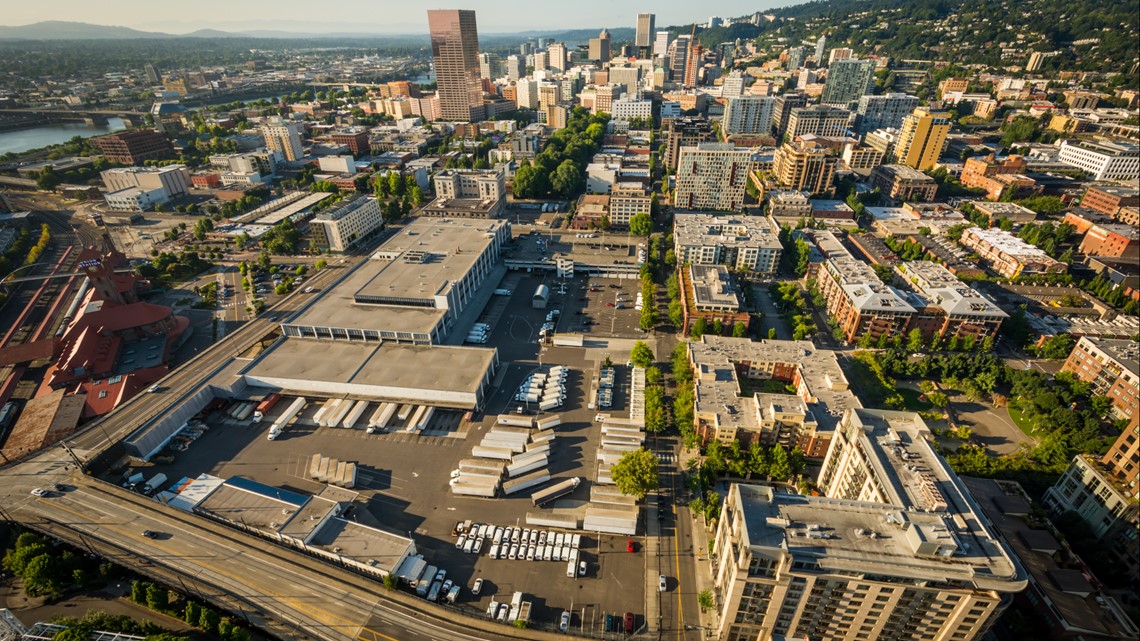
The size of the site also gives planners a chance to be more deliberate and ambitious, Rogers added, to outline a broad vision for how the redevelopment can make a tangible impact on some of Portland's biggest problems.
"This is crucial for addressing our housing shortage that we face right now," she said, "and it's crucial that we address our disparities in racial equity that many renters and homeowners face in Portland right now."
Broadway Corridor history
The core 14-acre site is located across the street from Union Station and was originally developed as railyard in the 1880s, according to the Oregon Department of Environmental Quality. The U.S. Postal Service built its central Portland processing and distribution center there in the 1960s and later bought the property.
The idea of redeveloping the site dates back to Portland's 1988 Central City Plan, Brennan said, and it finally became a real prospect when USPS sold the site in 2016 and relocated its operations to a new facility near Portland International Airport. Prosper Portland and the Portland Housing Bureau immediately started working on a plan to make good on the long-envisioned promise of the site.

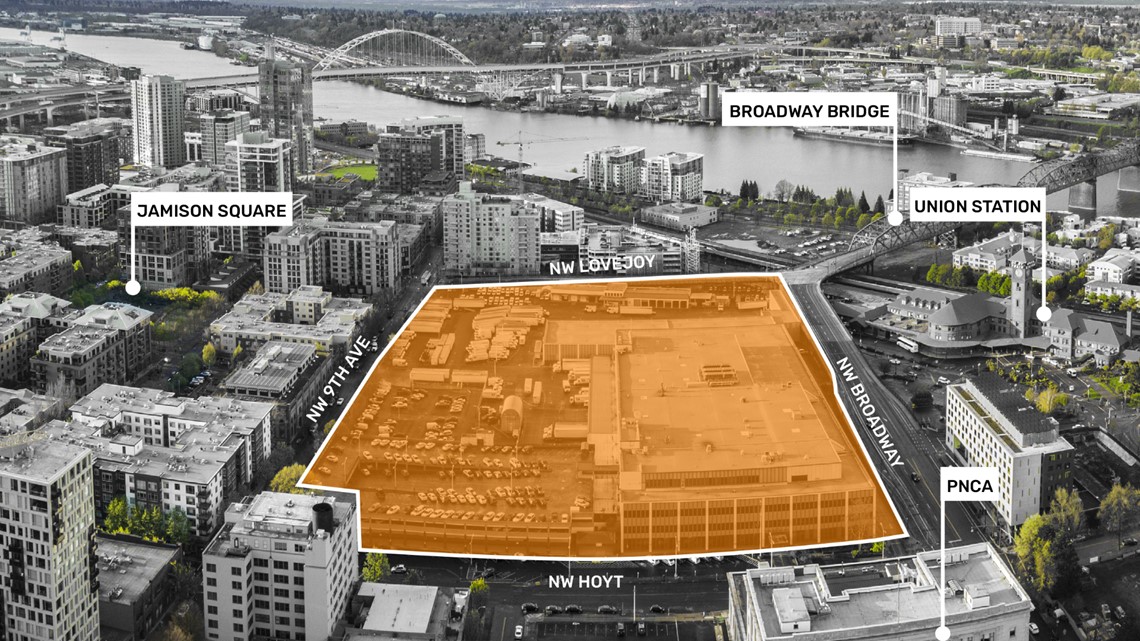
The groups started by looking at the lessons learned from earlier big development projects, Branam said, which resulted in the early establishment of a steering committee to guide the process, accounting for values like inclusion, connectivity, climate action and racial equity. The precise plan has evolved over time, she said, but stayed true to an original vision of a dense, mixed-use urban district.
"I think there was always a sense that we would probably have a termination of the North Park Blocks and an extension of the North Park Blocks, and that's continued," she said. "And one of the elements that's really exciting is that there will be a beautiful portion of the Green Loop, which is this idea of a linear park that would circle a good portion of the central city."
Groundwork and demolition
Clearing out the site was a major undertaking involving about 150 workers in total, Hennessee said, involving about 150 workers in total over a period of about a year. The demolition and remediation work represents about a $30 million investment. More than 90% of the on-site work was done by certified minority-owned firms, and the project has met or exceeded workforce goals for women in almost all categories, Hennessee said.

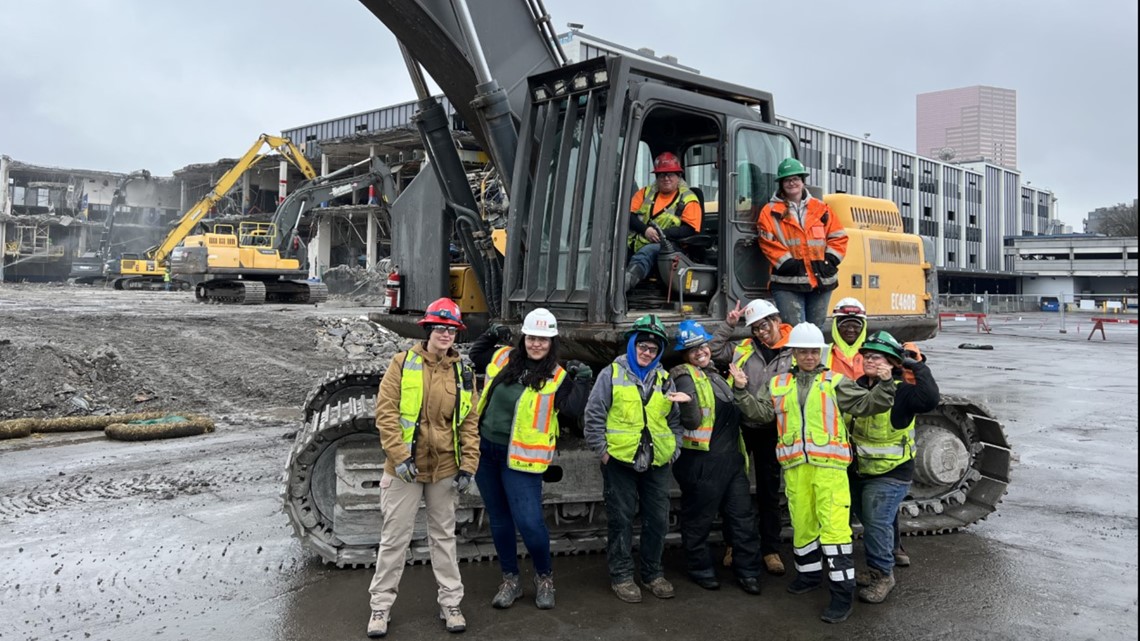
The demolition is an important first step to the site's redevelopment, but there's important planning work happening at the same time, including the creation of an intergovernmental agreement between the Portland Housing Bureau and Prosper Portland, the latter of which is technically not part of the city. The draft agreement got a first reading before the Portland City Council last week.
"It's laying the groundwork of how we're going to implement a shared goal of creating 720 affordable housing units within the Broadway Corridor," Rogers said. "And when we say affordable housing, we mean housing that's affordable to households earning 60% of area median income and below."


The Housing Bureau has identified a specific parcel within the former post office site where it will invest and bring in a development partner to build a structure for that housing, she said. The bureau also has development rights for additional affordable units within what will otherwise be market-rate housing on other parcels in the site, she said.
The planners have also regularly met with the Healthy Community Coalition, a group of about 20 organizations that all worked with the city and Prosper Portland to negotiate a Community Benefits Agreement for the project, which Hennessee said will open up more opportunities for underrepresented populations.
Redevelopment vision
When the project moves to the construction phase, the first step will be rebuilding infrastructure, streets and sidewalks on the site, Rogers said, and the city will need to bring on a development partner for that work. After that, it's time to "go vertical," which means building high-rises, starting with the multi-family apartment complex on Block 4, the portion set aside for the affordable housing building.
"It's going to be a multi-family apartment complex that we're hoping will be a range of bedroom sizes," Rogers said, "and we need to think about a range of income levels as well."
The bureau is aiming for a building with up to 15 stories and more than 200 units of housing, she said, comparing it to the Louisa Flowers Apartments in the Lloyd District.


On the rest of the former post office site, Prosper Portland has an exclusive negotiation agreement with Related and Melvin Mark, Brennan said, discussing a prospective agreement in which they would sell the property to the developers over a series of phases. Prosper Portland expects to hear back from them in early 2024, she said.
The master planning process put a heavy focus on climate action, Branam said, with a focus on leveraging the site's natural transit access and decreasing single-occupancy car trips. The goal is also to hit carbon net zero with the development. The housing bureau is working with the Portland Bureau of Planning and Sustainability and the Portland Clean Energy fund on the development of the affordable housing as well, Rogers said, looking at solar panels and other energy efficiency options.
The team that put together the master plan imagined a dense, mixed-use site, particularly along Johnson Street, which will be extended through the center of the former post office site and "feel like a main street."

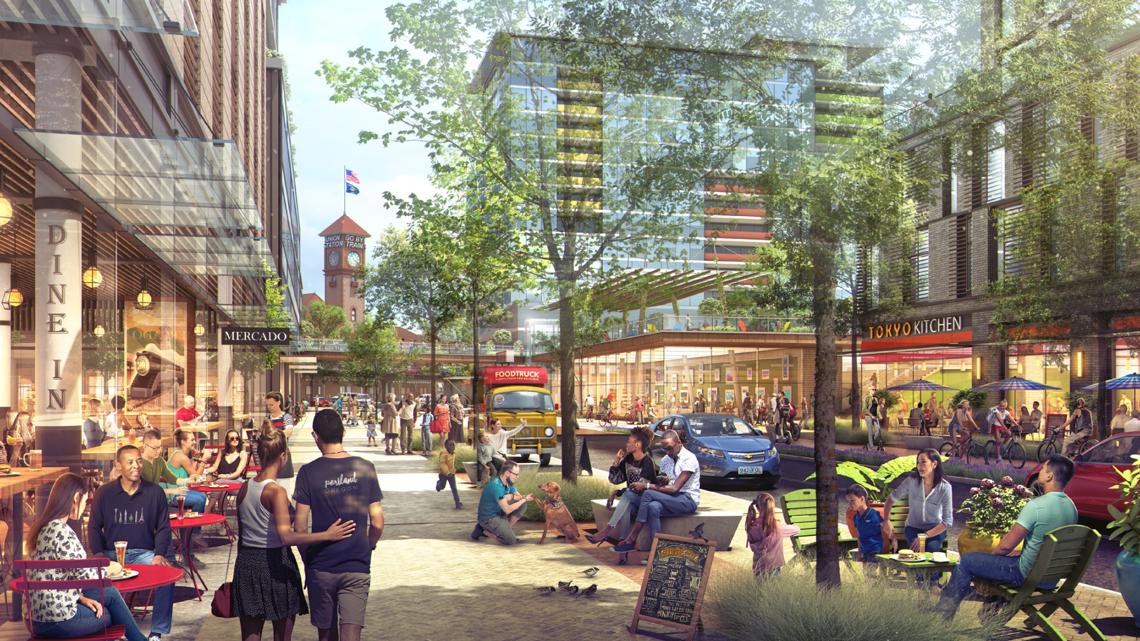
A park on the southern side of the area will function as an extension of the North Park Blocks, Branam said, near the affordable housing building and other residential development, and the north end of the site presents an opportunity for major employment centers.
"Of course, this is all going to be built out over 10 to 20 years, and so there will be a lot more that will come to life, but I think it will feel like a very vibrant, inclusive and really connected place," she said.
Hennessee said she also hoped to see the site become a very diverse and family-friendly area, with kids playing outside and the workers who helped building the project able to live there and enjoy downtown. Rogers added that she wanted to see a place where essential workers can live and thrive.
"We're talking about people who are our bus drivers, people who are our grocery store workers, people who are our teachers," she said. "They deserve, and they need, more homes as well."

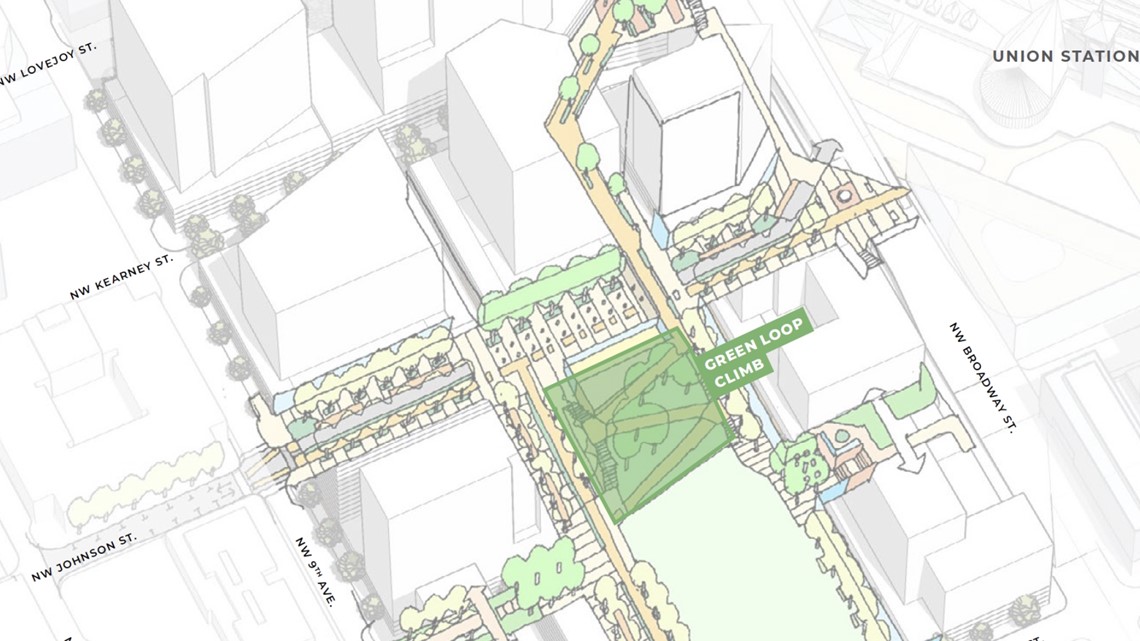
Portland Parks and Recreation is also working on a plan for the site's park space, she said, which is envisioned as an open green space in the heart of the development, with a Green Loop connection to get up to the Broadway Bridge.
The next phase of the project will be the remaining clean-up and environmental remediation work at the site, Branam said, and then the Portland Bureau of Transportation will extend and reconnect the street grid across the site. After that, the first phase of development will begin in 2025 or 2026. The pace of development for the remainder of the buildout will depend on the market and developer interest.
Straight Talk airs Friday at 7 p.m., and Saturday and Sunday at 6:30 p.m.

